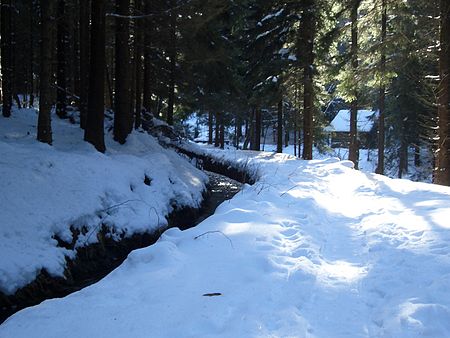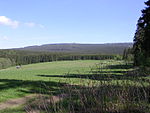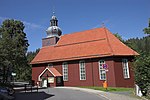Dyke Ditch

The Dyke Ditch (German: Dammgraben) is the longest artificial ditch in the Upper Harz in central Germany. Its purpose was to collect surface runoff for the operation of the Upper Harz mining industry from precipitation-heavy regions a long way away (particularly from the Bruchberg and parts of the Brocken massif). It was laid in 1732 and continually extended eastwards until 1827. Its original length was about 25 km; this was successively shortened by water tunnels between 1820 and 1861 to around 19 km. It is a central component of the Upper Harz Water Regale. Its takes its name from the Sperberhai Dyke which is, in fact, an embankment on top of which the Dyke Ditch runs in an aqueduct in order to cross a depression.
Excerpt from the Wikipedia article Dyke Ditch (License: CC BY-SA 3.0, Authors, Images).Dyke Ditch
Magdeburger Weg, Harz (LK Goslar)
Geographical coordinates (GPS) Address Nearby Places Show on map
Geographical coordinates (GPS)
| Latitude | Longitude |
|---|---|
| N 51.802777777778 ° | E 10.503333333333 ° |
Address
Die Wiege des Dammgraben
Magdeburger Weg
38667 Harz (LK Goslar)
Lower Saxony, Germany
Open on Google Maps









